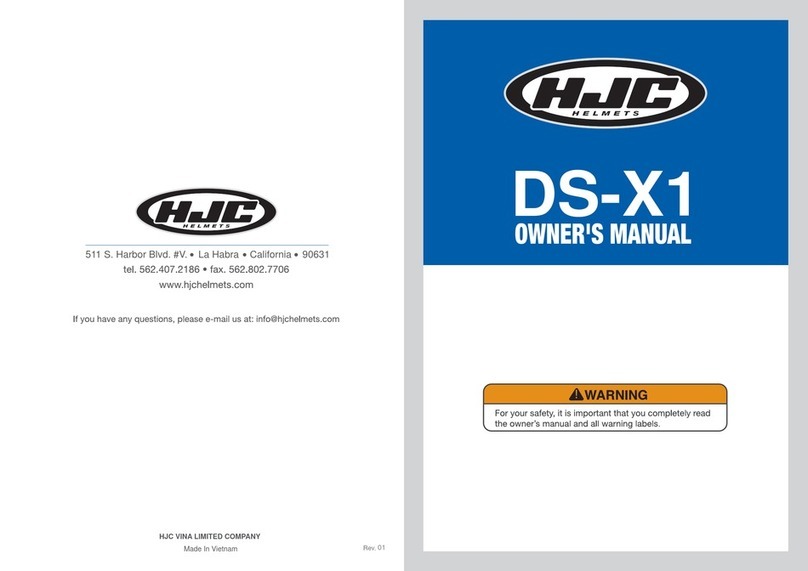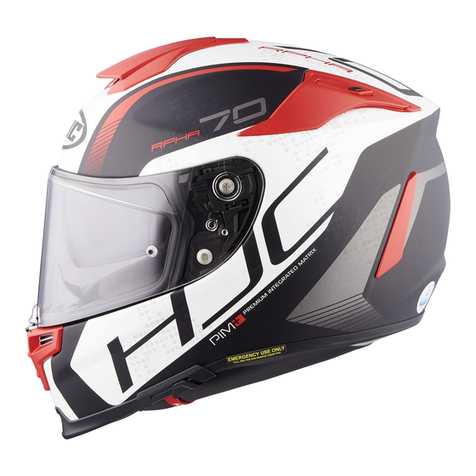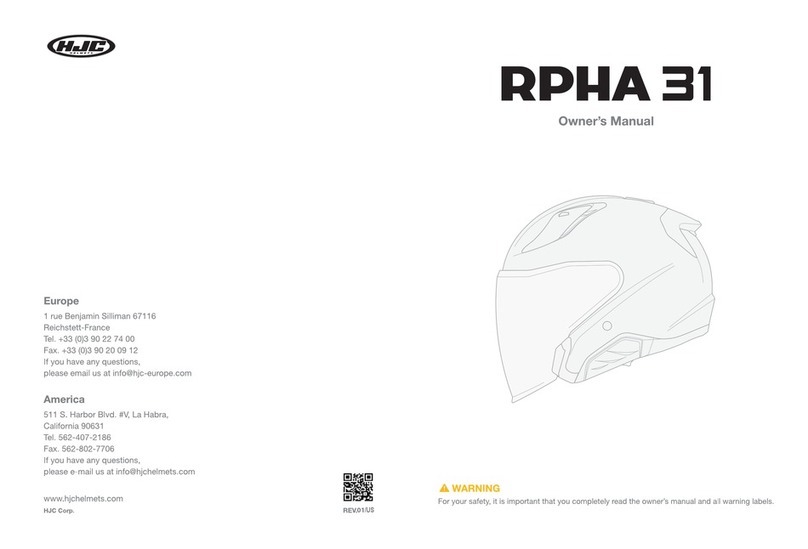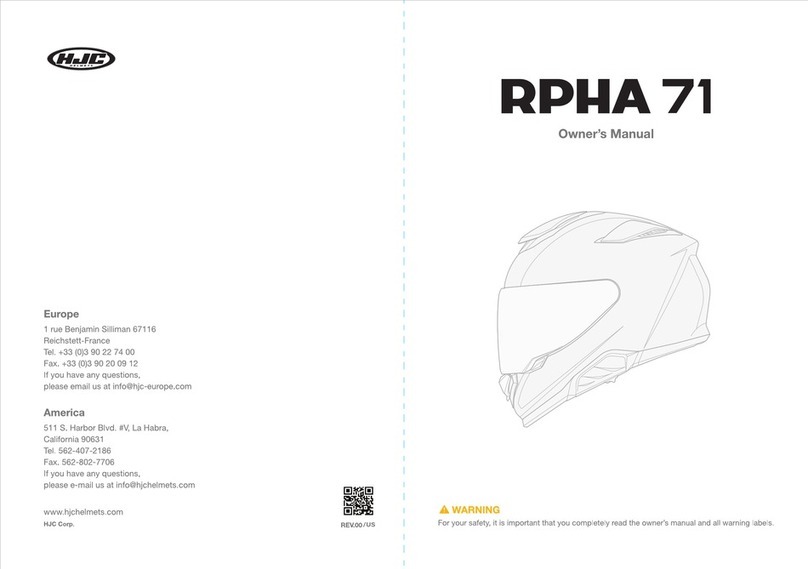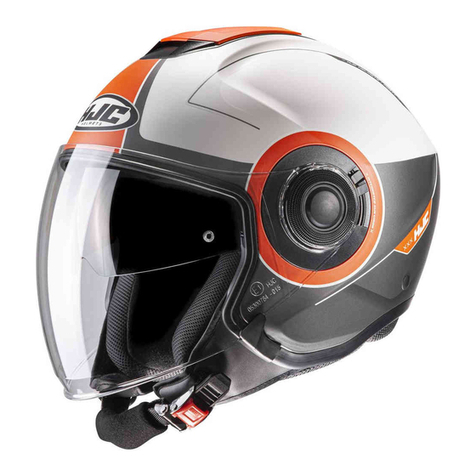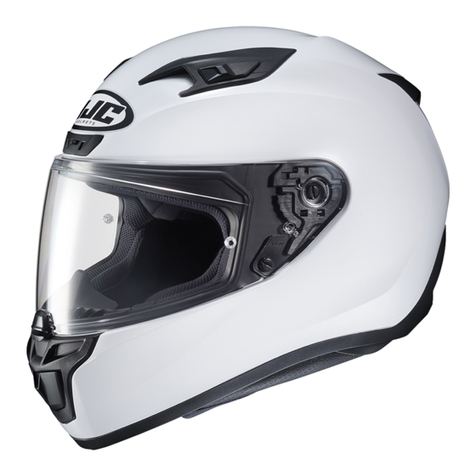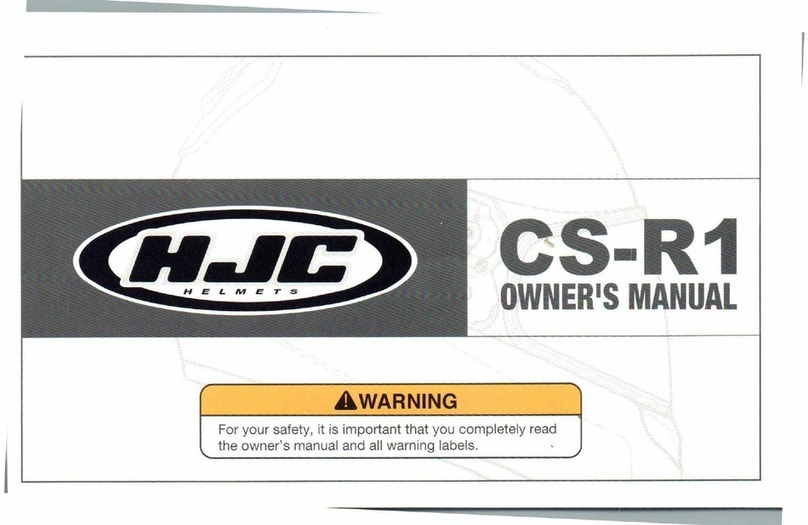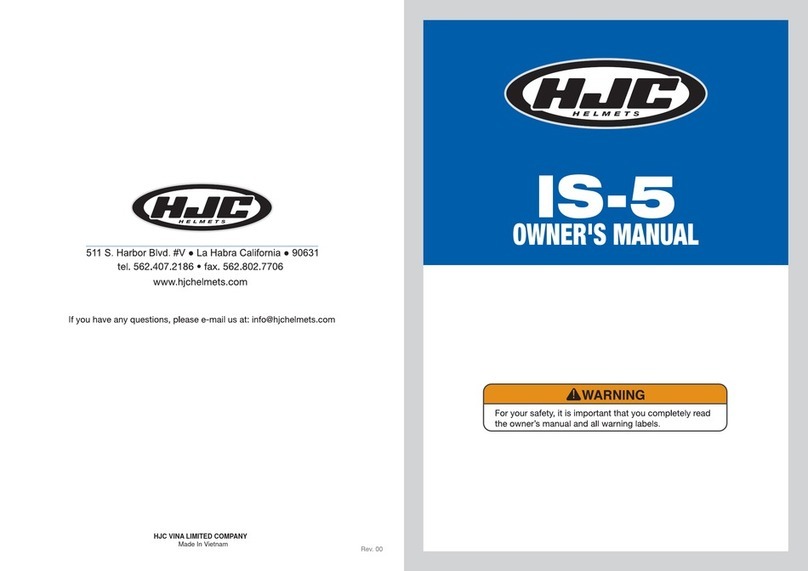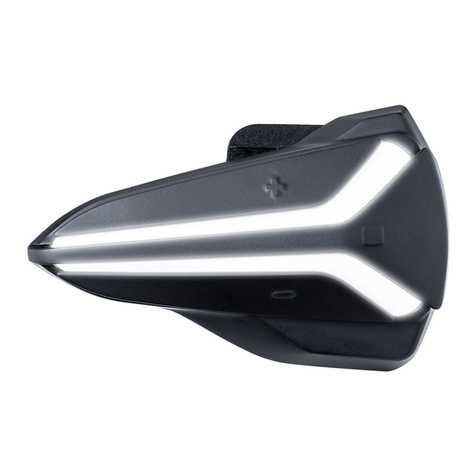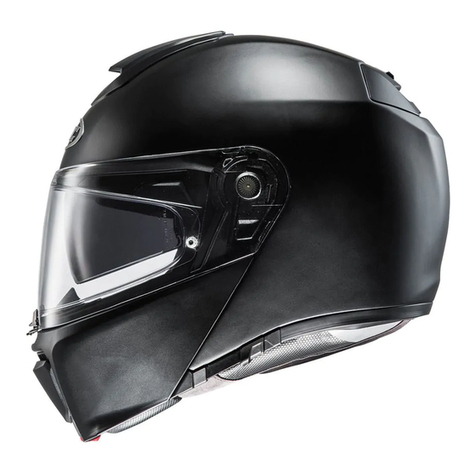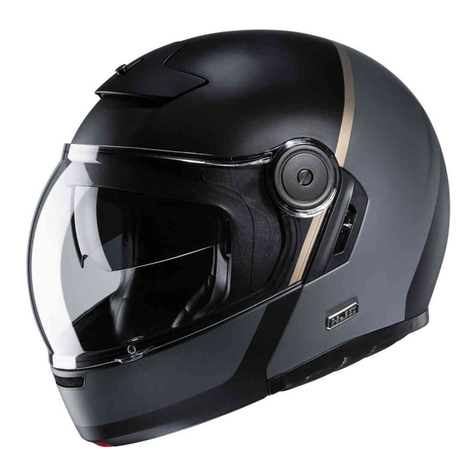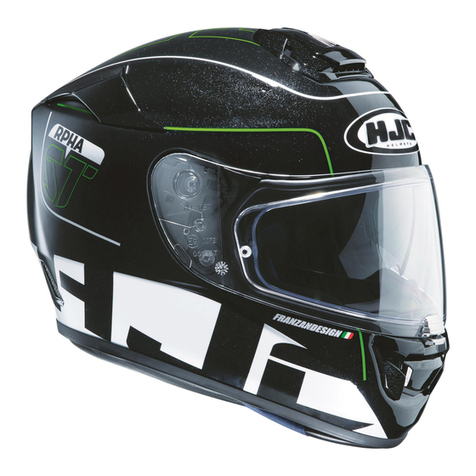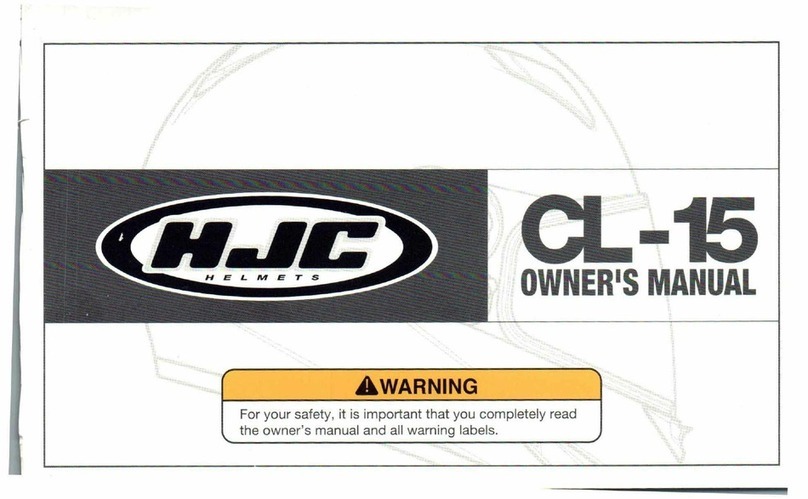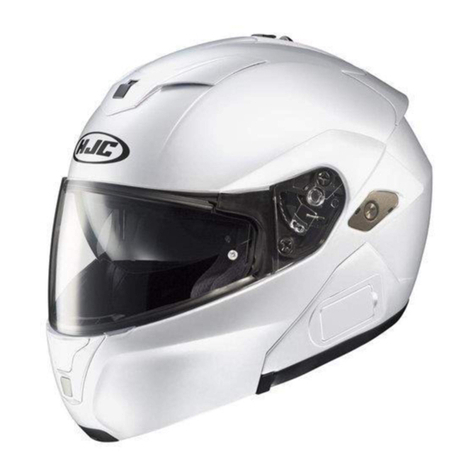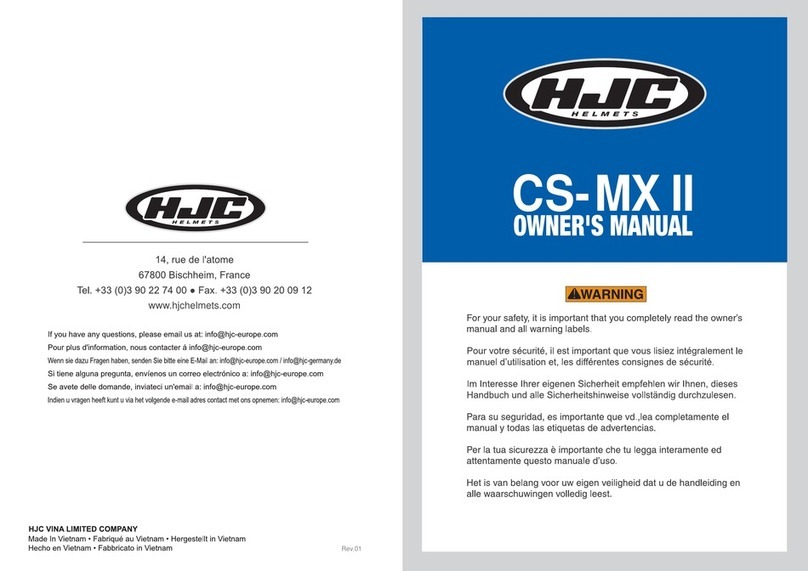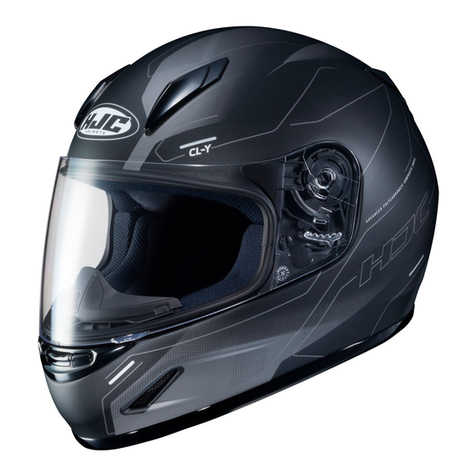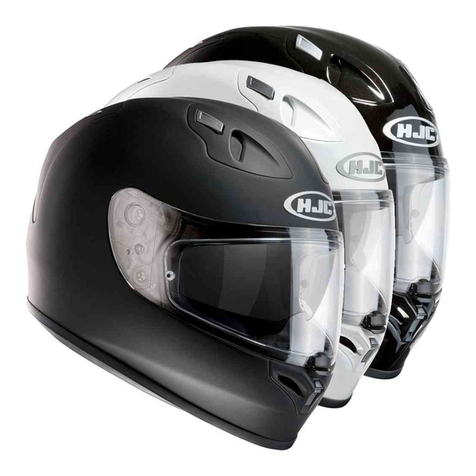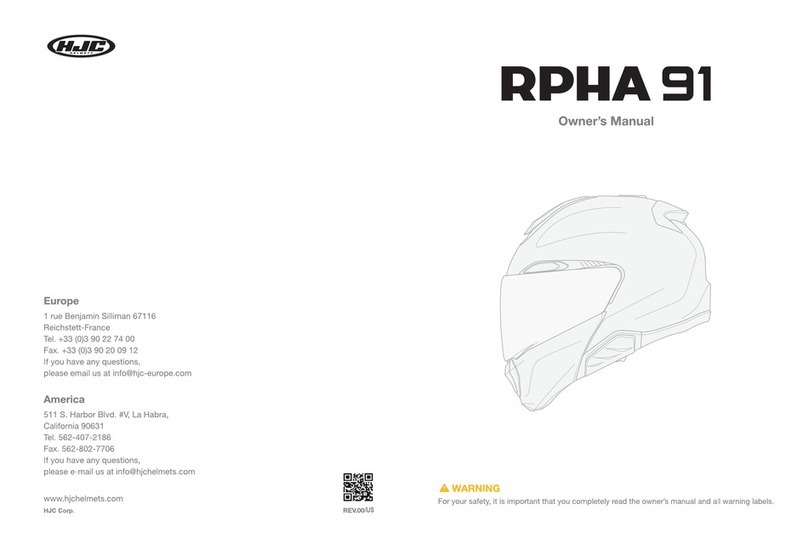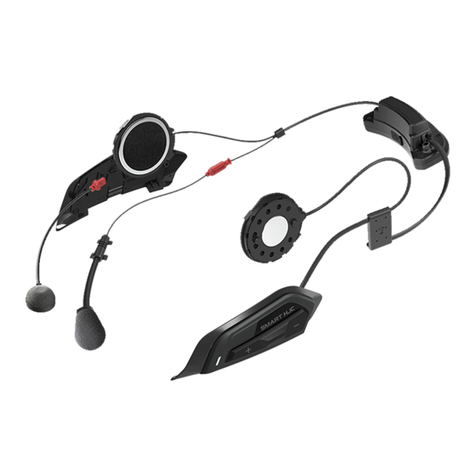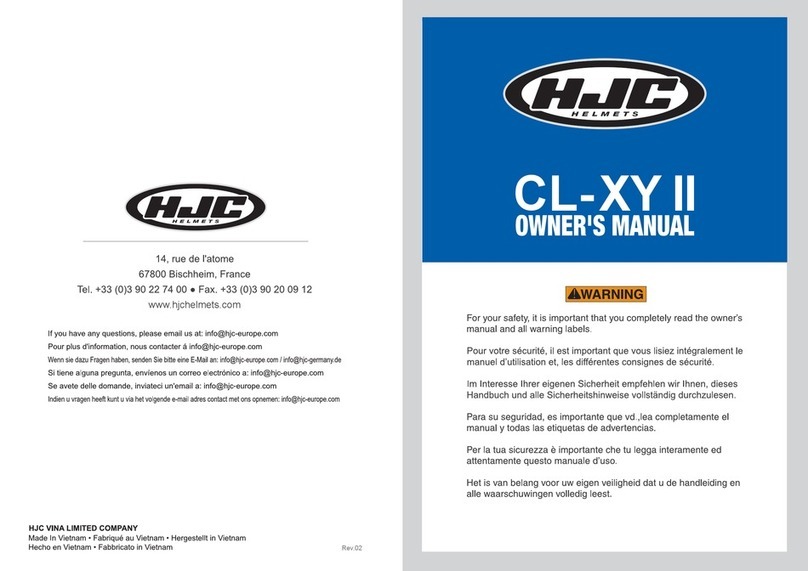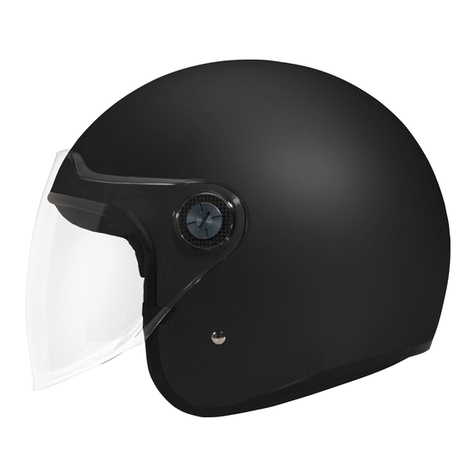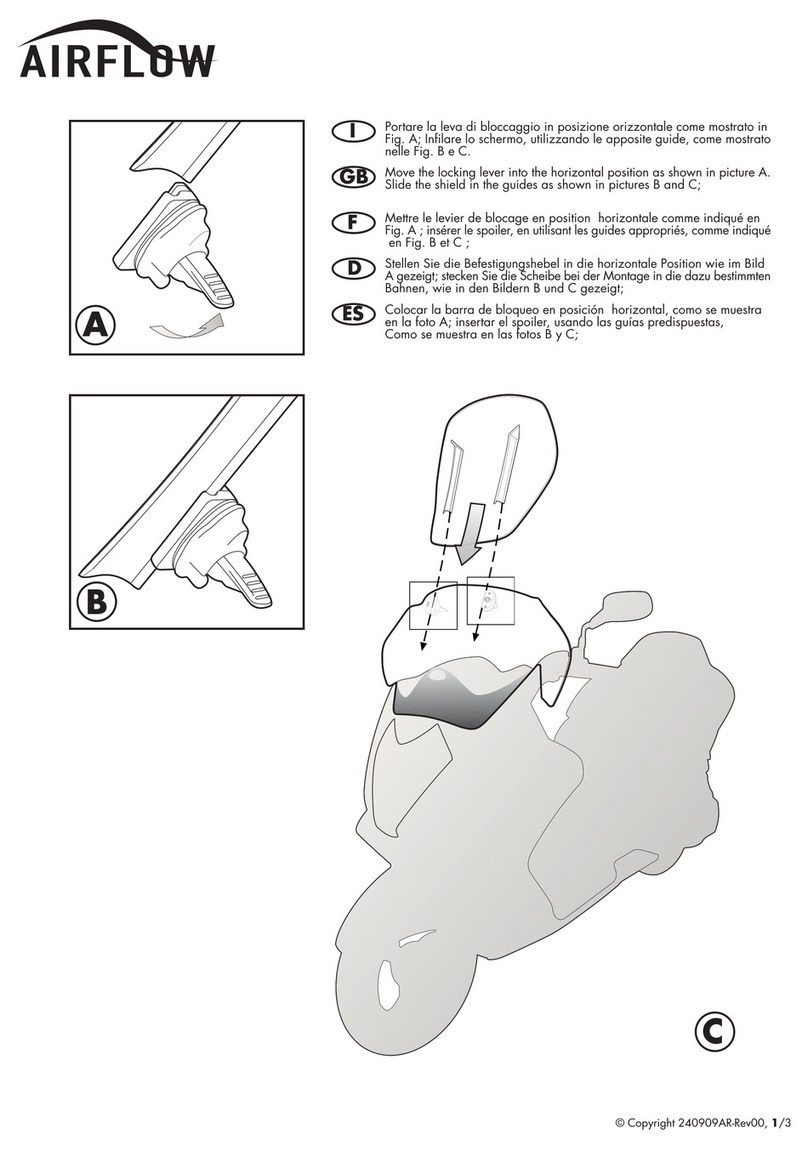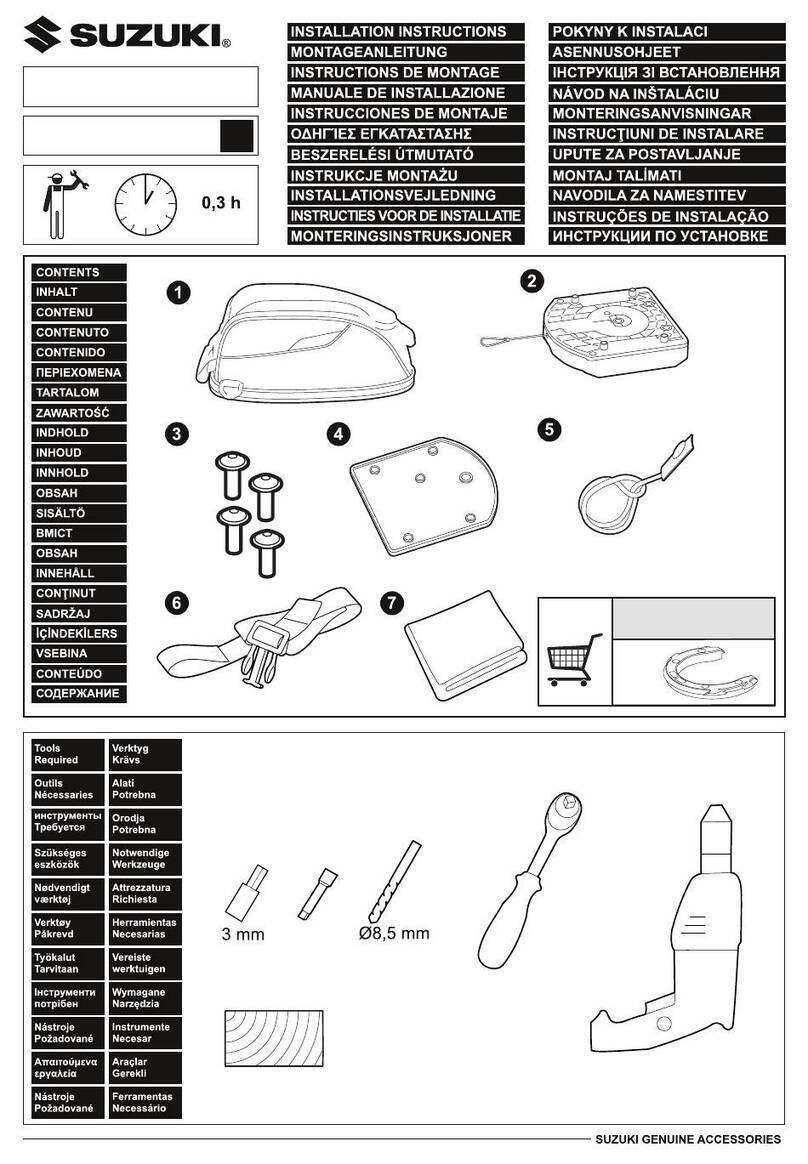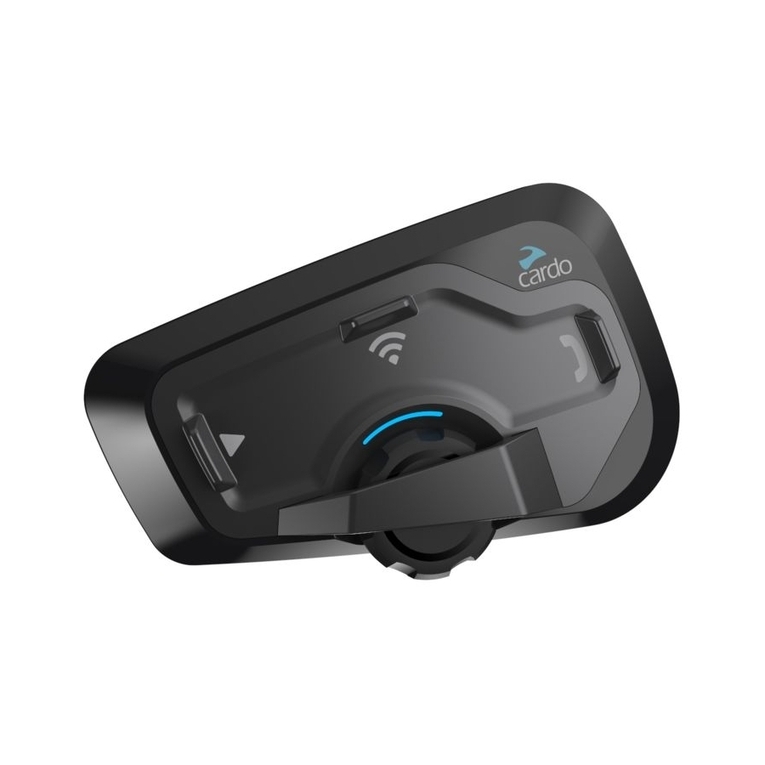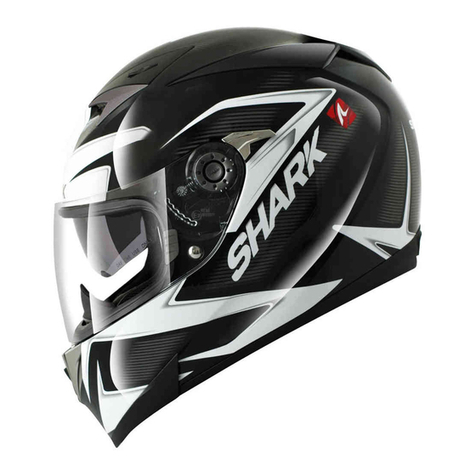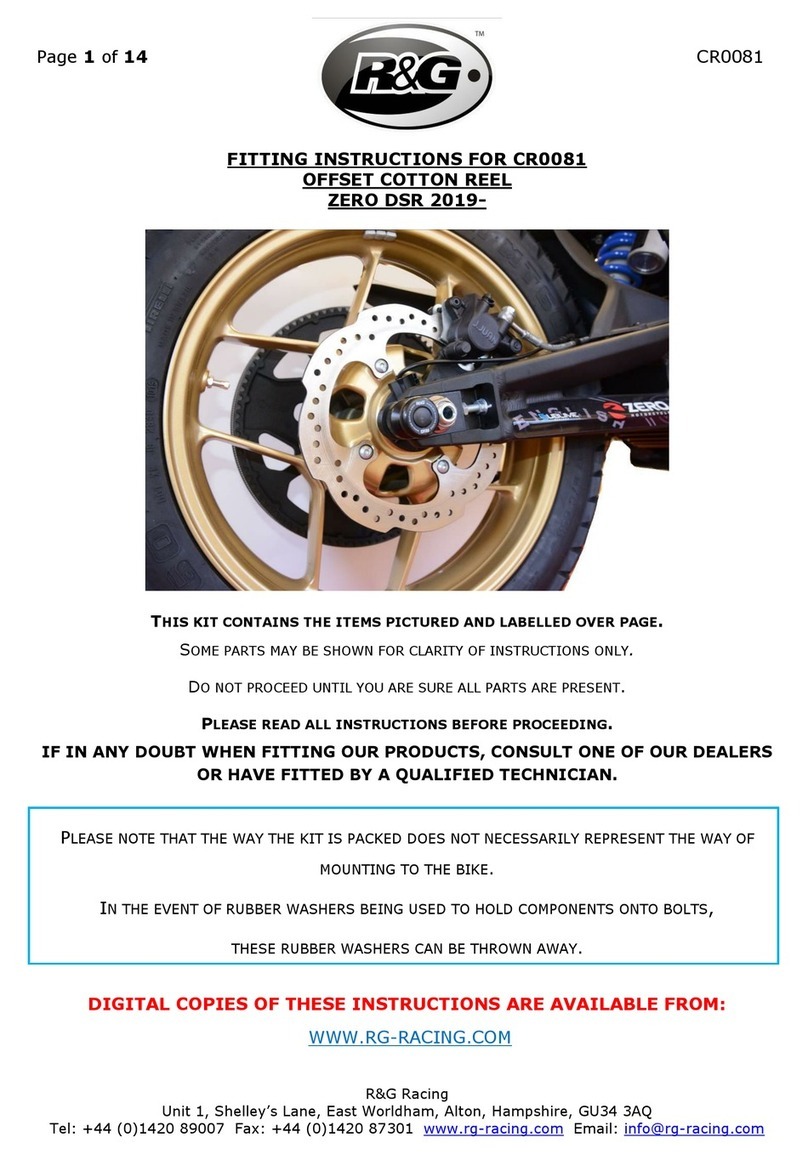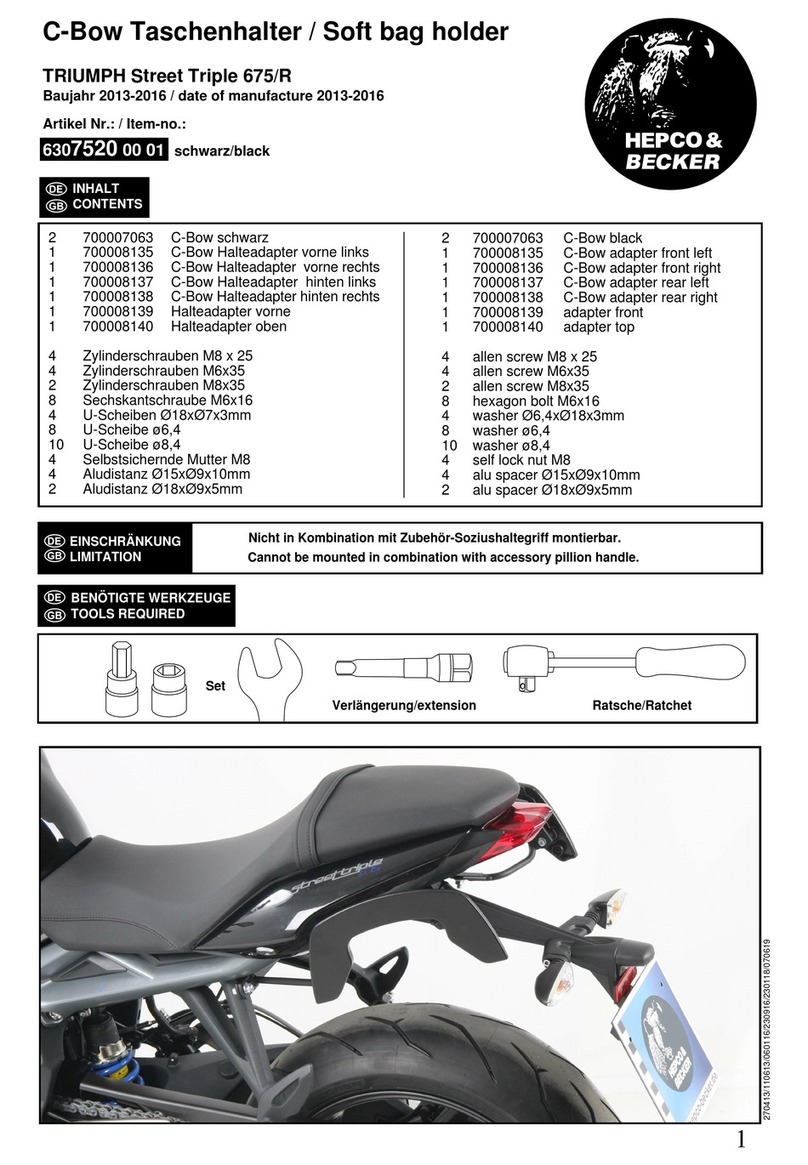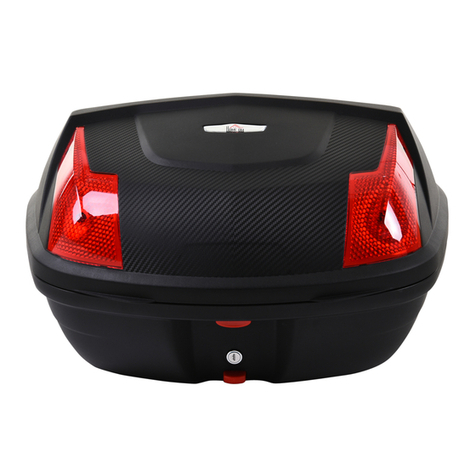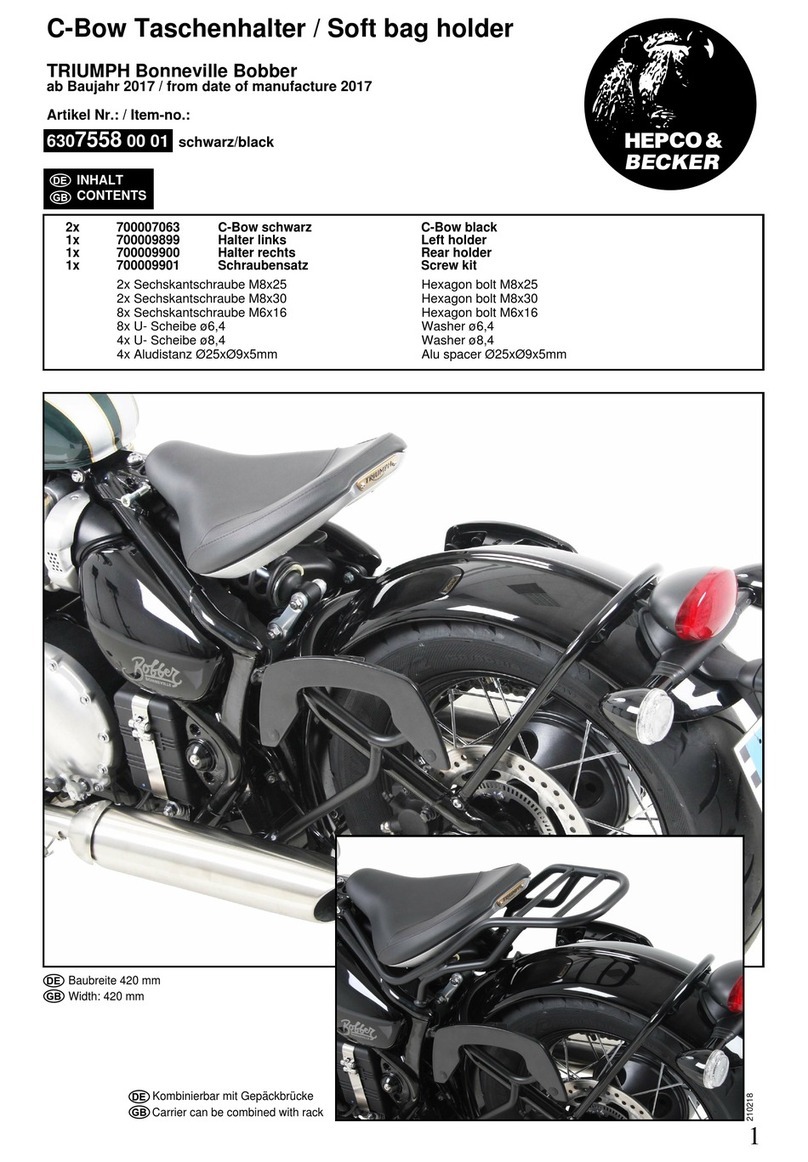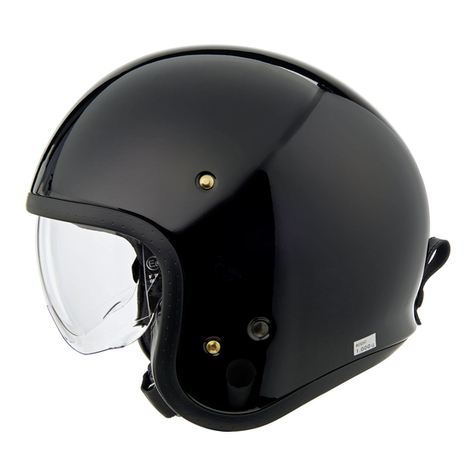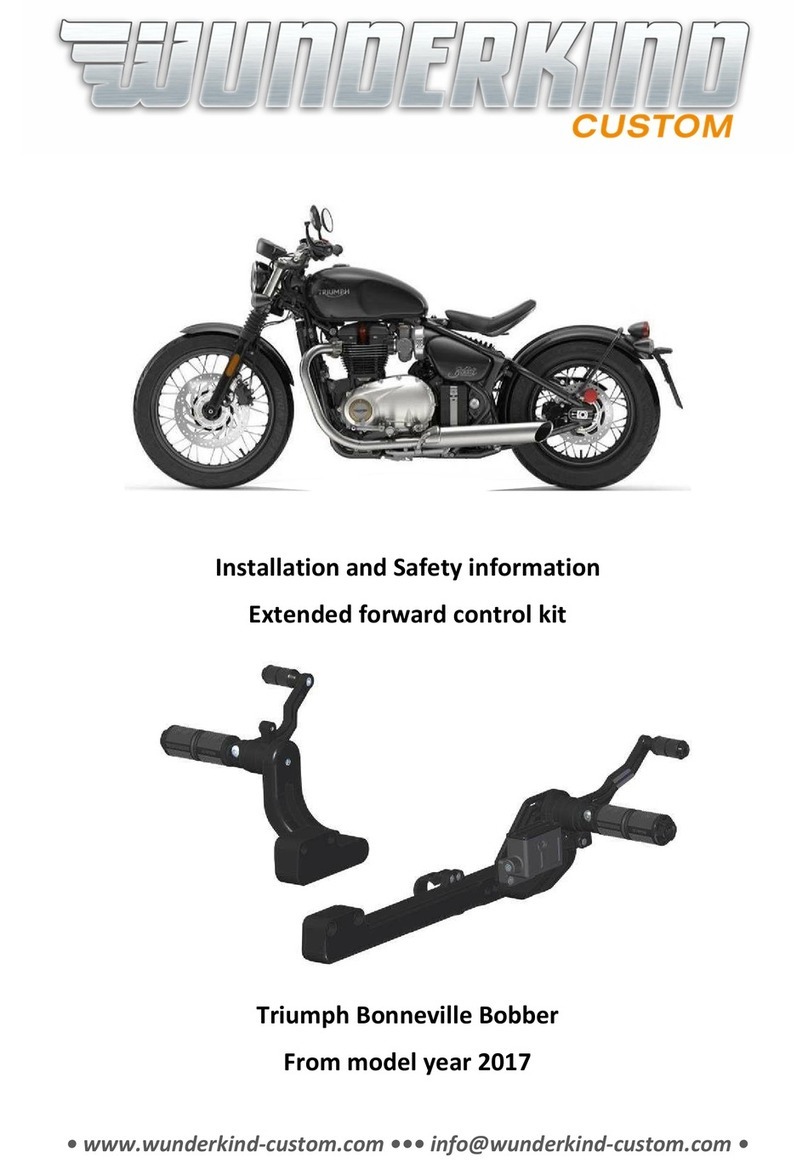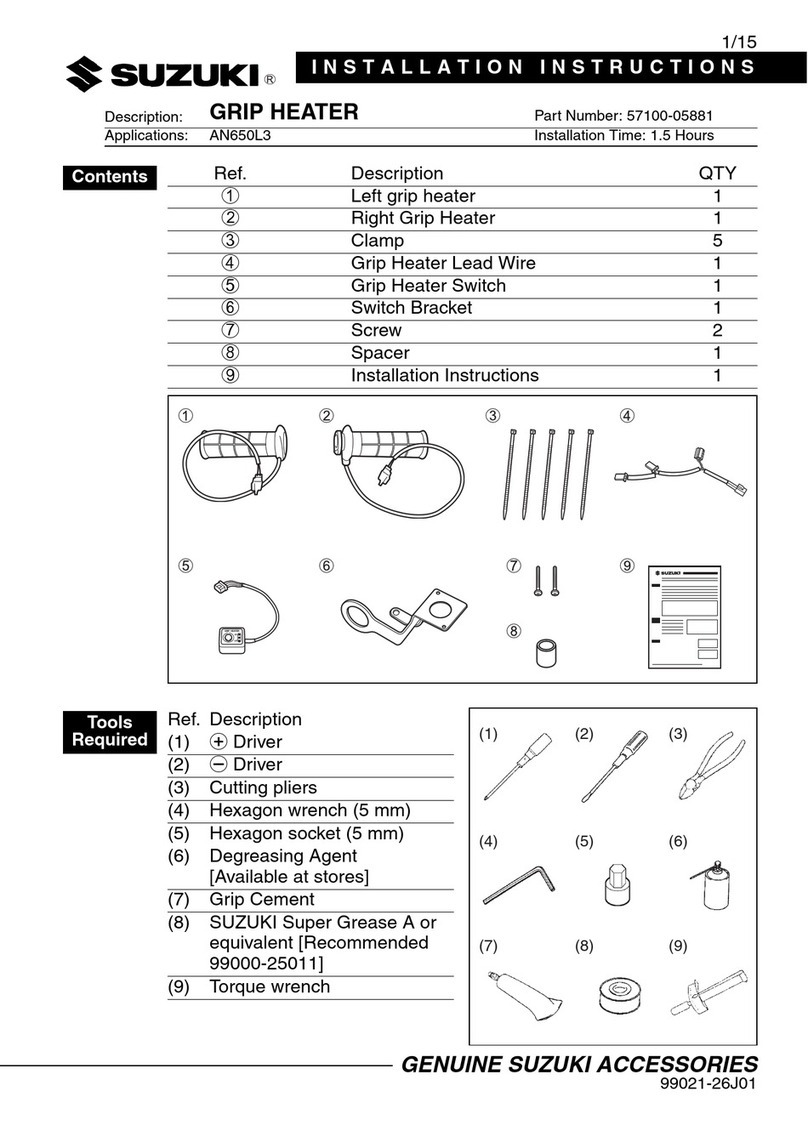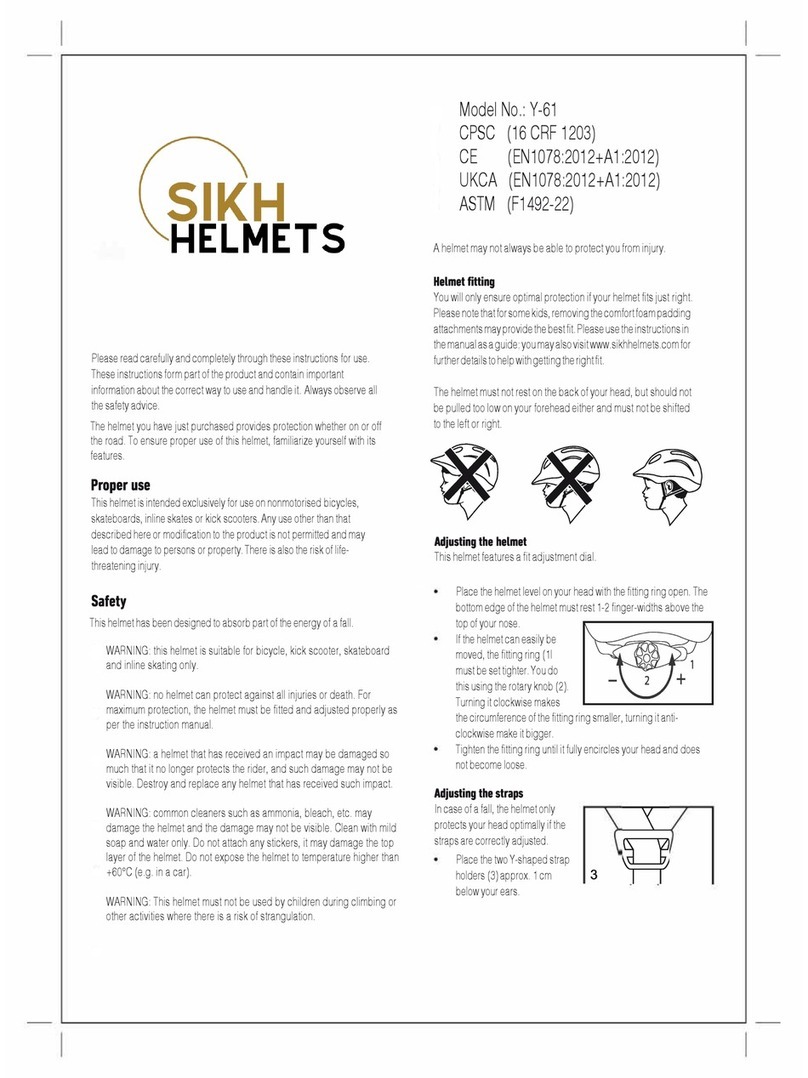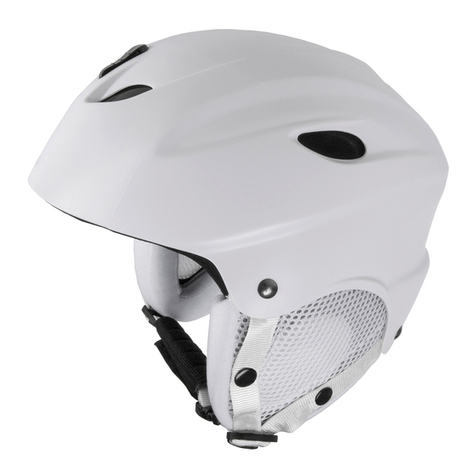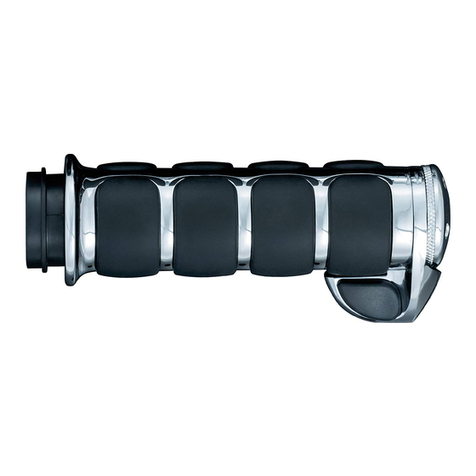HJC i50 User manual

Important Safety Information ........................................................
Selecting the Right Helmet ...........................................................
Specifications ................................................................................
Using Your Helmet Correctly .........................................................
Inspect Your Helmet ................................................................
Fasten the Retention System ..................................................
Visor Adjustment ......................................................................
Maintaining Your Helmet Correctly ................................................
Shell Cleaning .........................................................................
Interior Cleaning ......................................................................
Vent Cleaning ...........................................................................
Cheek Pad Removal ...............................................................
Cheek Pad Installation ............................................................
Crown Pad Removal ...............................................................
Crown Pad Installation ............................................................
Replacement Parts ..................................................................
Helmet Modifications ...............................................................
Storing Your Helmet Correctly .......................................................
Helmet Replacement .....................................................................
Warranty ........................................................................................
3
3-4
4
5-6
5
5-6
6
6-9
6
7
7
7
7
8
8
9
9
9
10
10
※Please visit www.hjchelmets.com for more information about HJC helmets.
DOT/ECE Approved
SIZES: XS-2XL
"ACS" Advanced Channeling Ventilation System: Full front to back airflow flushes
heat and humidity up and out with 13 vent holes to keep riders cool and comfortable.
Large Eye Port: Maximum visibility and superior goggle fit.
Perfect goggle fit shell: Comfort and perfect goggle fitment.
Functionally designed visor: Protects riders from branches and obstacles.
Soft interior: More comfort in dirt and off road conditions.
SLID(Sliding Layer Impact Distribution): Softens impact effectively and manages
multidirectional shock
Advanced Polycarbonate Composite Shell: Lightweight, superior fit and comfort
using advanced CAD technology
SuperCool Interior: Removable and washable.

The size chart is only for reference. Always try the helmet on and follow this manual's
instructions for a proper fit.
Although your HJC helmet is designed to reduce or prevent some injuries when worn, no helmet can
protect you from all possible or foreseeable impacts. For example, your helmet cannot protect you from
spinal or neck injuries. In addition, there is no guarantee that your helmet will PREVENT injuries to the
area of your head that is covered. A low speed accident may even result in serious injury or death.
Never buy a used helmet or borrow someone else’s helmet.
Over time the protective foam in helmets will adjust to the contours of a user’s head.
A used or borrowed helmet may not offer as much protection as a new helmet.
Important Safety Information
Selecting the Right Helmet
The instructions in this manual are designed to help you select the right helmet, wear it properly,
take care of it, and know when to replace it. Failure to follow these instruction may increase your
risk of serious injury or death in an accident.
In order to get the most protection possible from your helmet, you should always do the following:
Wear your helmet when you ride;
Handle your helmet carefully to avoid accidental damage; and
Ride safely – do not take risks because you are wearing a helmet.
Wearing the wrong size helmet can increase your risk of serious injury or death in an
accident. A helmet that is too large for your head may be dislodged or knocked off in
an accident. To select the right size helmet for your head, follow these instruction :
1. Measure your head. Wrap a tape measure around your head about one inch (2.5cm) above your
eyebrows.
2. Use the sizing chart to select the helmet size that corresponds most closely to your head measurement.
If your head size falls between two helmet sizes, try on the larger helmet first and then the smaller size.
3. Try on the helmet by grasping both chin straps to pull the helmet completely onto your head,
ensuring that the top of your head is in contact with the top of the helmet interior.
4. Check for a proper fit. To make sure your helmet is the right size, check that :
●The helmet inner lining fits snugly around your head.
●The top pad presses firmly on your head.
●The cheek pads contact your cheeks.
●There is no space around your brow under the inner lining.
Test this by trying to insert your fingers.
If the helmet does not fit snugly, try on a smaller size.
5. Check your field of vision when trying on a helmet. Some helmets may obstruct or block your vision
when looking left, right, up, or down.
Always make sure you can see well enough to safely operate your motorcycle.
Always make sure you can see well enough to safely operate your motorcycle.
6. Test the helmet fit by placing your hands on each side of the helmet.
While holding your head as motionless as possible, try rotating
your helmet from left to right then up and down. If you can feel
the helmet padding sliding on your head, it is too big, try a size
smaller. You should feel the helmet move the skin on your
head and face as you try to move the helmet.
7. Fasten the retention system (chin strap) as tight as possible under your jaw without causing pain.
There must be no slack in the strap, and the strap must be tight up against your jaw. See page 5-6.
8.
Test the retention system (chin strap)
●Put your hands on the back of the helmet and try to push
the helmet off by rotating it forward.
●Put your hands on the front of the helmet above your forehead
(or on the chin guard) and try to push the helmet off by rotating
backward.
If helmet comes off or shifts over your eyes, try another size or another model or brand.
You must be able to see the edge in your upper field of vision.
Repeat steps 3 throught 8 until you find a helmet that fits your head snugly and securely.
Sepecifications
14
1. Outer Shell
2. Rear Exhaust Vent
3. Comfort Liner
4. Impact Absorbent Liner
5. Rubber Edge Trim
6. Chin Strap
7. Chin Strap Snap
8. Double "D" Ring
9. Mouth Vent
10. Eyeport Gasket
11. Top front vents
12. Visor
13. Visor Side Screws
14. Visor Center Adjust Screw

Using Your Helmet Correctly
●Never adjust your helmet accessories while riding – Only make helmet adjustments when stopped.
●Never drop your helmet – Dropping your helmet may crack the shell or damage the protective foam.
The damage may not be visible. Your helmet is only designed for ONE impact. Refer to “Helmet
Replacement” (p.10) for more information on what to do after helmet has been dropped.
●Never wear anything between your head and your helmet – this may reduce the effectiveness
of your helmet.
●Never hang or hook your helmet on anything including handle bars - Doing so may
cause damage to the helmet protective foam or liner.
●Never use insect repellent on or around your helmet – insect repellant may damage your
helmet’s visor, shell, protective foam, or other components.
●Never expose helmet to gasoline or gasoline fumes – Gasoline may damage your helmet’s
visor, shell, protective foam, or other components.
●Always wear eye protection – Always wear eye protection when riding.
●Always be alert for sounds – Your helmet may impair your hearing. However, your helmet is not
a form of hearing protection.
●Always store your helmet in its helmet bag when not in use to help reduce accidental surface damage.
To reduce the risk of serious injury or death and to help prevent damage to your helmet :
To reduce the risk of serious injury or death, always use your helmet correctly.
If parts fall off while riding, your vision may be blocked which could cause an accident.
Inspect your helmet
To ensure that your helmet is in the best condition to maximize your protection, always inspect
your helmet for damage before riding :
●Check visor screws – retighten if necessary. Be sure not to over-tighten any screws. Center
screw can break and visor screws can strip the screw sleeves if over-tightened.
●Check for helmet damage. – If your helmet is damaged or cracked, stop using it immediately.
See “Helmet Replacement” (p.10) section for further information.
If your helmet has been dropped, you may not be able to see the damage.
●Check for worn or damaged parts. Plastic components may wear out over time.
If you find worn or damaged parts, replace them or purchase a new helmet.
See “Replacement Parts” (p.9) for information on parts replacement.
●Check the retention system (chin strap) for damage. If it is frayed or ripped, replace the helmet.
●Check that all pads are in place. Both of the cheek pads and the crown pads must be in place.
Fasten the Retention System
Fasten the retention system (chin strap) as tight as possible under your jaw without causing pain.
There must be no slack in the strap, and the strap must be snug up against your jaw.
If the retention system is not tight, your helmet may become dislodged or knocked off in an accident.
Do not rely on the snap to secure the helmet. The snap is provided only to prevent the
strap from flapping in the air. Fasten the retention system only in the following manner:
Visor adjustment is critical to ensure a full range
of vision. HJC recommends adjusting the visor to
its highest position, lowering it only when riding
in muddy conditions to offer better “roost”
protection. (DO NOT over tighten the side or
center adjustment screws).
Double “D” Ring
Visor Adjustment
Maintaining Your Helmet Correctly
Only use approved methods to clean the helmet. Using other unapproved chemicals or
methods may damage the helmet shell or lining. A damaged helmet may increase your
risk of serious injury or death in an accident.
Glossy Finish. HJC recommends cleaning your helmet with products designed for automotive
cleaning and polishing. All HJC helmets are finished with an automotive type base coat/clear coat
finish. Rubbing compounds can be used for deep cleaning to remove many scratches and scuffs.
Follow the product’s instructions diligently. Over polishing with rubbing compounds can cause
light abrasions which may dull the finish of your helmet. Stickers and decals will leave adhesive
residue when removed. To remove the adhesive residue, use alcohol swabs. Be certain to
immediately wipe away the excess liquid and clean the area with soap and water once the
adhesive residue is removed. Do not use excessive pressure while rubbing when attempting to
remove the adhesive residue, instead use multiple light treatments.
Non-Glossy Finish. For our flat finish (non-glossy) helmets, we recommend using warm water and mild
soap. Use multiple treatments for heavier dirt. Do not use excessive pressure or rubbing compounds
while cleaning the surface as a “glossy” effect could be created, running the flat finish appearance.
Shell Cleaning
1. Please clean helmets from dust, bugs or grass within one day.
Cleaning progress
1) Clean the helmet with warm water and cloth.
2) If there are any remains left, dry the helmet and remove any remaining contamination with rubber
eraser.
※Do not use any alcohol or thinner to clean the helmet because they may damage the paint.
2. Avoid oil contamination as it is extremely difficult to clean once exposed.
■

Interior Cleaning
Although we recommend changing a helmet every 3 to 5 years, the accumulation of sweat, humidity and
dirt can deteriorate the fabric and stitching and this may cause odor. To wash HJC removable pads, hand
washing is recommended. If you use a washing machine, please use on “Delicate” setting and air dry. HJC
do not recommend using spin-dryer for the interior pads as it may damage the material. For non-removable
interiors, HJC recommends using anti-bacteria and mildew eliminating products such as “Helmet Fresh.”
or other similar product.
Vent Cleaning
Dirt and debris can find its way into venting of your HJC helmet. Compressed air cans used for cleaning
computer keyboards may be used to blow the debris from the ventilation system. It is recommended that
you remove any removable pads before doing this process.
Always check to make sure helmet pads are installed before using the helmet. A helmet
with missing or improperly installed pads may increase your risk of serious injury
or death in an accident.
Cheek Pad Removal
There are 3 snaps holding the cheek pad in place.
1. Gently pry the cheek pad away from the interior, releasing the snaps.
2. Grasp the cheek pad near its center and gently pull it free from the chin strap.
Cheek Pad Installation
1. Feed the chin strap through the opening in the cheek pad.
2. Align and fully slide the cheek pad plastic plate between shell and EPS.
3. Clip the cheek pad’s 3 small male snaps to the 3 female snaps fixed on the shell interior.
Crown Pad Removal
1. Grasp the crown pad fabric as close as possible to its plastic base and pull/pry away from the helmet.
Notice how the crown pad plastic section aligns with the shell plastic sleeve. This will help orient you
with the reinstallation.
2. Repeat same at rear.
Crown Pad Installation
※Slide tab 'A' from the cheek pad into
ㅤthe holder 'B'.(Repeat same on opposite side)
1. Install the front section first by aligning the plastic shell base and the crown pad plastic sleeve, ensuring
that the center and side holes are properly aligned. Press the crown pad plastic sleeve (center portion)
into the center of the channel which is built into the plasticshell base, working your way outward to each
side.
2. Align and snap the two rear snaps into place.
1. Turn the holder mouth to the direction of the arrow below.
2. Gently pull the mouth vent to the direction of the arrow shown below to detach upper part.
3. Unhook the bottom part gently to the direction of the arrow shown below to fully remove it
Mouth Vent Removal
Holder Mouth
B
B
A
A
B
B
A
A

Replacement Parts
Do Not Modify Your Helmet
Use of replacement parts not manufactured by HJC may increase your risk of serious
injury or death in an accident. Only use HJC parts that are specifically designed to
work with this helmet.
Your HJC helmet is designed to meets DOT and ECE standard. Contact HJC America for more
information about the DOT and ECE standard.
Modifying your helmet may increase your risk of serious injury or death in an accident.
Do not modify your HJC helmet. Modifications include the following :
● drilling holes;
● cutting shell, liner, or strap;
● modifying the retention system, including adding a chin cup;
● removing parts;
● painting; and
● attaching accessories that are not manufactured by HJC for this helmet.
If you have questions about modifications, please contact HJC America, See back cover for contact
information.
Helmet Disposal
Storing Your Helmet Correctly
Helmet Replacement
Warranty
An improperly stored helmet san become damaged and may increase your risk of serious
injury or death in an accident. You should:
● Store helmet in a cool and dry place,
● Keep helmet away from pets and other animals,
● Keep helmet away from heat in excess of 122°F and do not set on or near
hot surfaces.
● When helmets left out in the sun for extended periods of time, it may fade overtime.
Although your HJC helmet is constructed with the best materials available to offer
a long-lasting product, it will eventually need to be replaced. Immediately replace your
helmet if:
● It has suffered an impact. Your helmet is only designed for ONE impact. An impact
may fracture the outer shell or compress the impact absorbing liner. You may not
be able to detect this damage. Any impact in a crash or a drop from as low as 4 feet
is enough to damage your helmet.
● The shell, lining, or retention system is damaged. The helmet shell, the impact
absorbing lining, and the retention system must be in good condition to provide you
with the most protection.
Even if your helmet has not been damaged, it needs to be replaced every 3 to 5 years depending on how
much you use it. Over time, UV rays and adhesive and component aging will damage your helmet.
Wearing a damaged helmet may increase your risk of serious injury or death in an accident.
If you are unsure if you need to replace your helmet, contact HJC America before using your helmet again.
If you buy a new helmet, destroy the old one to ensure it cannot be reused.
Do not sell or give away your old helmet, even if it has not been damaged.
Over time the protective foam in the helmet will adjust to the contours of your head.
If someone else uses this helmet it will not provide them with as much protection.
1. Place the mouth vent into the hole shown below to fixate it.
2. Please turn the holder mount to the direction of arrow below.
Mouth Vent Installation
Holder Mouth
HJC hereby extends a limited warranty to the purchaser of a HJC helmet that the helmet is free of defects
in materials and workmanship.
Coverage
This warranty is applicable to manufacturer's defects only and the warranty period varies between HJC
models. The RPHA Series warrants up to 5 years from the date of purchase or 7 years from date of
manufacture, while all other models warrant up to 3 years from the date of purchase or 5 years from date
of manufacture (whichever comes first). This warranty does not apply to any problems that arise from
wearer’s misuse, negligence, modifications, accidents, etc. A change of fluorescent color is not subject
to warranty as this is a typical characteristic of fluorescent color; it may fade or degrade depending on the
user’s environment.
Disclaimer
Any warranty of merchantability and any implied warranty are hereby expressly disclaimed. In addition HJC
shall not be liable for any consequential damages.
Procedure
In order to receive warranty, please take your helmet, your receipt showing the date of purchase, and a
brief memo that includes a description of the problem, your name, and phone number to the authorized
HJC dealer from which you purchased your helmet.
Table of contents
Other HJC Motorcycle Accessories manuals
